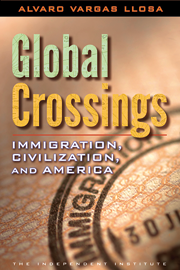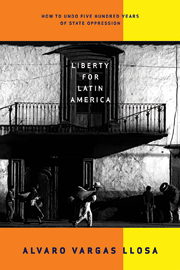WASHINGTON—I received a generous letter from the executive chairman of the World Economic Forum this week telling me I had been selected as a Young Global Leader 2007 by an international jury presided over by Queen Rania of Jordan. A friend of mine joked that I am now “a dupe of the worldwide conspiracy of the New World Order.” I quipped back that I would rather think of myself as a classical liberal “mole” among the conspirators.
Actually, most of the solutions to poverty in developing countries are proposed by people convinced that there is, indeed, an international “conspiracy” against prosperity led by powerful governments, corporations and leaders associated with the World Economic Forum who want to hold stagnant nations back. It is precisely because millions of Latin Americans think that prosperity is a zero-sum game in which you can only win what somebody else loses that quite a few demagogues are in power in that region today.
The Quarterly Review of the Federal Reserve Bank of Minneapolis recently reprinted a little-known paper on Latin America written by a team of four economists led by Harold Cole and Lee Ohanian, and published in a specialized journal in 2005. Unlike most studies about why some countries continue to be poor, this one goes beyond conspiracy theories and actually shows what the problem is.
First, the economists compare 12 Latin American countries with 22 nations elsewhere that are culturally similar but much richer. They then eliminate a number of possible explanations for Latin America’s poor performance. Some analysts think the region is stagnant because a relatively small number of people actually have work. But Latin America’s employment rate is 70 percent that of Europe’s—a small gap compared to the huge gap in output. The problem is not that too few people are working but that they are not producing enough. For the last 50 years, the productivity of an average Latin American has amounted to one-third of the productivity of an American. By contrast, fifty years ago a European used to produce a bit more than a third of what an American used to produce and today the proportion is 80 percent.
So, what accounts for Latin America’s low productivity? Could it be a lack of physical capital—i.e. too few machines per worker? The ratio between physical capital and output in Latin America has been relatively similar to that of the United States for the last 40 years, so that cannot be the reason. The difference must lie in the efficiency with which Latin Americans use their labor and their capital. But what explains that difference?
A traditional view maintains that education—sometimes called “human capital”—is the key factor. However, the authors found out that education and labor skills have been climbing faster in Latin America than in Europe and in Asia since 1960. Education helps a country compete once it is on a par with other nations, but Latin America’s improving education has not been reflected in the region’s economic performance in the last half-century.
The crucial element is the complex web of barriers that hurt Latin America’s ability to compete, creating all sorts of disincentives for making more efficient use of technology and increasing productivity. Some of these barriers relate to the outside world—tariffs, quotas, multiple exchange rates and excessive regulations against foreign producers. Other obstacles are domestic—government-owned enterprises, barriers to entry into certain industries, and inefficient financial systems. There have been many times in the last 130 years, for instance, in which Latin America’s trade barriers were almost four times higher than Asia’s. To give another example, since the nationalization of oil in Venezuela, that country’s oil productivity has remained at half its previous level.
Why has Latin America created more barriers than other regions? The authors choose to leave it as an open question, suggesting it might make an interesting subject to pursue. But the reason is probably this: Vested interests—in the political, the business or the labor communities—have been in a stronger position in Latin America than elsewhere to get the political and legal institutions to protect them.
The persuasive view that transpires from the study is that economic development is, first and foremost, an act of legislative purge seeking to remove obstacles. It sounds a lot easier than it is.












